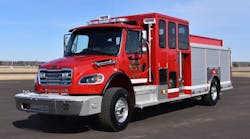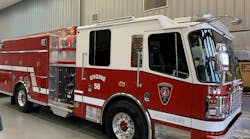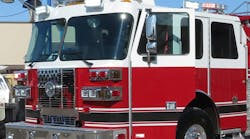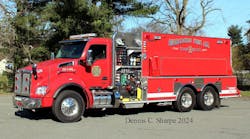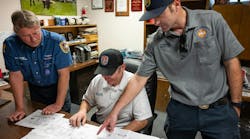In recent years, there has been an escalation of responding fire apparatus crashing into each other and in the past few weeks it has gotten even worse. In this column, we have always tried to be honest and fair in taking on the hardest issues. This column is no different, as we uncover the little understood and rarely talked about phenomenon of fire apparatus racing each other into an alarm location.
First, the incidents. On April 27, 2004, two pumpers from different departments responding to a working shed fire collided at an intersection controlled by a pre-emption system in Melrose Park, IL. This incident resulted in one line-of-duty death and several serious injuries.
In Waterbury, CT, on May 19, 2007, a responding pumper and ladder collided at an intersection. According to police reports, the officer and the driver of the pumper were not wearing seatbelts and were ejected. The officer succumbed to his injuries several days after the crash. Six other firefighters were injured.
In St. Louis, MO, on Oct. 10, 2008, two quints responding to a fire collided at an intersection. The incident was taped on a security camera. Eight firefighters were hurt.
In New York City on Nov. 22, 2008, a squad and a tower ladder collided while responding to an odor of gas. The squad officer was seriously injured.
In Philadelphia, PA, on March 19, 2009, a tractor-drawn aerial ladder and a squirt collided in the Center City section. Nine firefighters were hurt, including one who was trapped in the apparatus for 15 minutes.
Finally, in Houston, TX, on March 30, 2009, an engine and a ladder responding to what turned out to be a good-intent call for sewage smoke created by the public works department collided at an intersection controlled by a pre-emption system (see article below). The colliding apparatus took down a utility pole and the ladder truck then flipped onto a car and struck a bicycle. The driver of the car was injured and the bicyclist later died of her injuries. One firefighter was badly hurt when he was ejected from one of the apparatus. The pumper struck the ladder truck in the rear. No skid marks were found at the scene. The pumper was about a year old and the ladder was less than six months old. It has been determined by Houston police that the driver of the ladder truck ran the red light and will be cited for "not using due caution." It appears that the pre-emption system was working properly at the time of the incident.
The Houston media started a dialogue about the long-standing tradition of fire companies racing to beat each other to the scenes of fires or emergencies. Research from my department finds that it was a practice that started in the late 1800s, when volunteer firefighters would race to the scene of fires because the first unit to get water on a fire would receive a monetary award from the insurance industry. Since that time, it has become tradition and a matter of pride to arrive first and render aid.
Obviously, much has changed in a standard fire department response over the past 100 years. Getting to the scene of a fire or an emergency quickly and safely is admirable, but killing and injuring civilians and firefighters in the process is unacceptable. Everyone in the fire service who has ever driven or ridden in a 30-ton fire truck responding to the scene of a fire or emergency knows what an awesome responsibility that is. However, every fire department response must be a controlled response; a quick response must also be a safe response. Who is responsible for this quick, yet safe response? It starts at the top with chief officers. Are there written policies that are enforced to control responses; i.e., stopping at all red lights and stop signs?
Company officers and apparatus operators have a shared responsibility to make sure that the apparatus, equipment and firefighters arrive on scene safely. Unfortunately, I have experienced an unsafe response where the operator was not holding up his end of the bargain and the company officer was yelling at the operator to "go faster or the second due is going to beat us in." What I find really disconcerting is that in two of the incidents listed the intersections were controlled by pre-emption systems. If the intersection is controlled by pre-emption and the light is red, you must stop. Why? Because another responding apparatus has grabbed the signal from another direction before your apparatus did.
No firefighter or company officer wants to be involved in a traffic accident. That is why it is so important for the company officer and the apparatus operator to work together to achieve a quick, yet safe response.
MICHAEL WILBUR, a Firehouse® contributing editor, is a lieutenant in the New York City Fire Department, assigned to Ladder Company 27 in the Bronx, and has served on the FDNY Apparatus Purchasing Committee. He consults on a variety of apparatus-related issues around the country. For further information, access Wilbur's website at www.emergencyvehicleresponse.com.

